#the story will likely have lots of gore and parasites and also cannibalism so if thats not ur thing i totally get it
Text
i am finally starting on my whumpboratory story. because of the nature of the story and what the protagonist does, she will either be a wheelchair user or have a prosthetic leg and/or a cane (because she's gonna be missing one or both legs). that means tons of research for me, however. google and any other online thing has a tendency to like... focus on the family/friends of the disabled person and not the disabled person themself? like how to be a Good Parent to a kid who uses a wheelchair, and how to be a tolerant teacher or whatever.
so. i would be really grateful if u guys shared some stuff u never see in fiction regarding amputees/wheelchair users, or stuff u always see but hate, stuff to avoid, stuff to include, idk. anything u can think of and want to share.
because of my limited knowledge of the topic im considering writing my story in the form of a bunch of diary entries from the protagonist. but in case i decide to write prose i would really like to avoid making mistakes that couldve easily been avoided had i asked this question before starting
#on that same note if anyone would like to volunteer as a sensitivity reader......#no pressure at all but just putting it out there#i would appreciate it a lot#the story will likely have lots of gore and parasites and also cannibalism so if thats not ur thing i totally get it#whump community
44 notes
·
View notes
Text
Album Chronology - Death
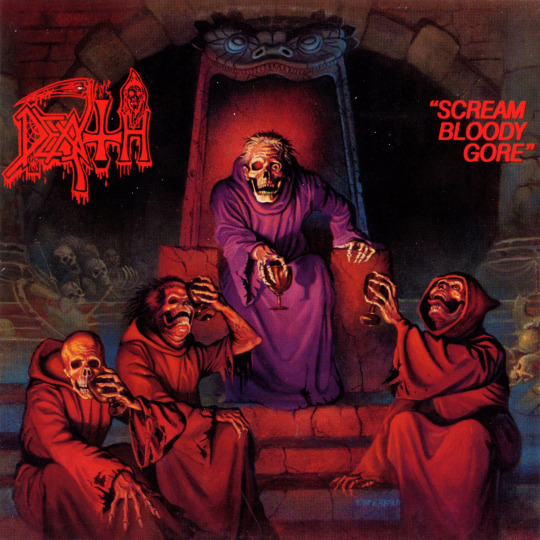
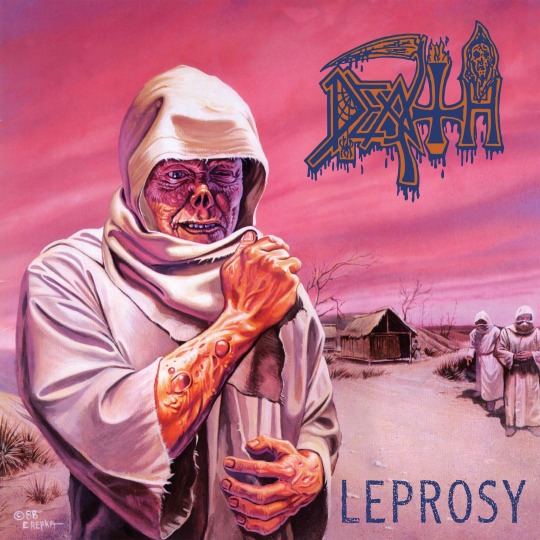
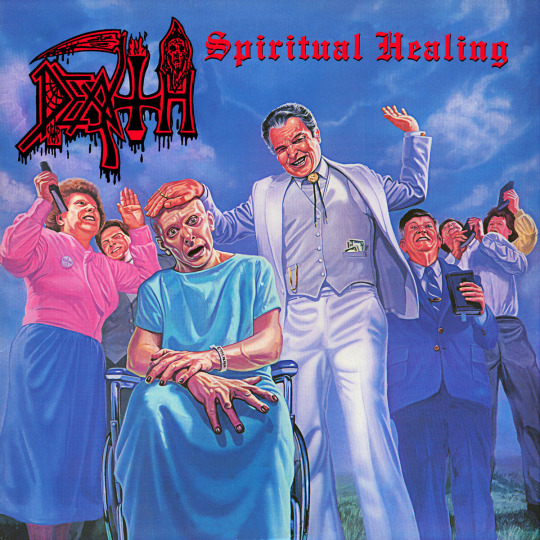
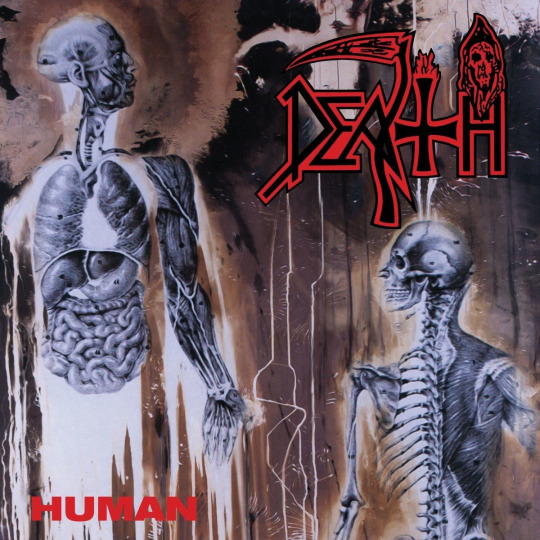
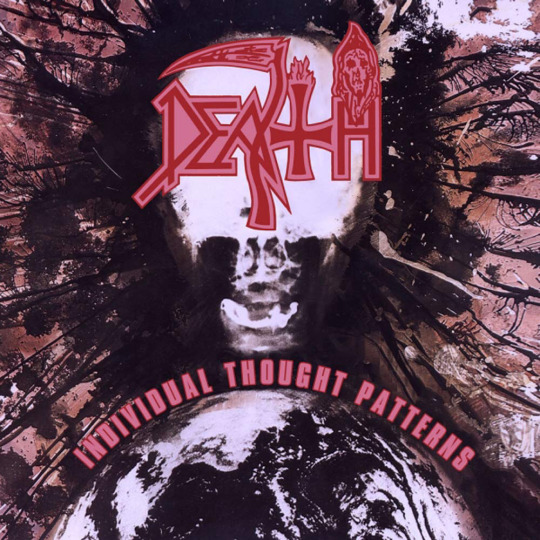

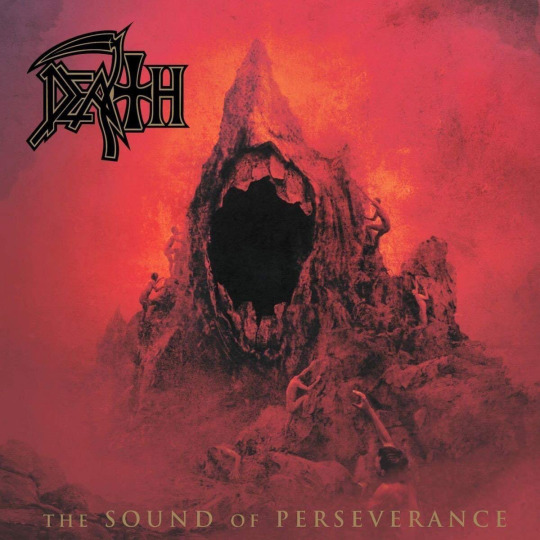
The whole ranking-albums-from-worst-to-best has been done to death to the point of staleness at this point, but mostly due to the format, at least to me. I’ve read so many damn worst-to-best lists at this point that they’re all kind of predictable even when they’re seemingly trying to force some kind of novelty or surprise factor by putting a fan-favorite or highly revered album really low in a ranked list. It’s all gotten pretty dry at this point, plus, to me, I can’t help but see a little bit of futility in compiling lists for active artists whose next release will render such a list so quickly obsolete. I honestly had the idea of doing something tier-related to make it less rigid a year or so ago, but lo and behold, tier-list videos are the newest horse getting beaten to death. So rather than jumping around an artist’s catalog and tossing in some spicy hot takes, I figured why not take the chronological approach and trace the story of the artist’s creative trajectory, and not spoil the #1 spot by revealing the #2 spot.
So why do these kinds of lists? Also, why Death?
I make this little chronology to offer my insight into Death’s discography partly for the reason so many others have made similar rankings: to appreciate Death’s music and the huge legacy Chuck Schuldiner left through it. But I also make this because I do think my perspective on Death is a somewhat unique one, at least among Death fans. Chuck Schuldiner was an incredibly talented musician and a beloved figure within the world of metal, and that aspect of his legacy has undoubtedly been enhanced by the untimeliness and unfairness of his passing. The guy certainly had a strong presence on the stage and a certain charisma off of it, and his cherishing of animals surely resonates with me as well. Death was also hardly my first death metal band, so I do think that gives me a bit less of a nostalgic perspective on their legacy. I still enjoy a lot of the same things about Death that most fans do, and at the end of this list, it might not really end up being all that shocking or controversial, just a slightly tempered version of what most fans would make. I’m pretty long-winded, so I’ll cut the intro and get into the music: Death.
1987 - Scream Bloody Gore
I have to reinforce my position right from the get-go about having a more measured view of the band’s catalog because the spicy takes come right out of the gate with Death’s debut album, Scream Bloody Gore. The sour really isn’t all that sour and it comes with a little bit of sweet right afterward too: I think this is Death’s worst album. But that just means it only gets better from here, and I do still really like it. It’s a classic in its own right that started Death on a more solid footing than the average debut project in very new territory at the time and I again do genuinely still like it a lot; I own it, along with the rest of the band’s catalog, on vinyl. But it is, as I mentioned, a first step into new territory, and rather naturally primordial, which indeed has its own appeal in the context of the era it came from and for which it deserves tremendous appreciation. There is indeed a lot to appreciate here. I love the persistence of the bass line in the title track, the hooks of songs like “Zombie Ritual” and “Baptized in Blood”, and the amped up Slayer-inspired extremification of thrash metal that would only snowball further as the band and the genre they helped pioneer progressed. But the primary role Scream Bloody Gore served was to lay the groundwork for Death to expand upon in that early era that would itself later become the groundwork for their more ambitious progressive tilt during the second half of their career. I’ll throw it out right here just to get it outbid then way, it’s not exactly a hot take, but some Death fans are partial the other way; it’s probably already evident, but I prefer the band’s second era from Human to Perseverance. Personally I think bands like Morbid Angel and Cannibal Corspe were more suited to this primal gory form of early death metal, and I think Death would have wound up being seen as merely a pretty good band in a tier below those guys if they had stuck with what they were doing with their debut and the two albums that followed for the rest of their career. Again, Scream Bloody Gore is by no means a bad album, or even a rough start, kind of a Kill ‘em All sort of debut that laid solid foundations and allowed for greatness to follow but indeed stands well enough on its own.
7/10
1988 - Leprosy
The band’s sophomore release just a year later showed immediate signs of improvement. The trimmed track list with more meticulously groomed songs (and a greater density of sick riffs) produced several live staples for the band, like the title track, “Left to Die”, and especially the ever-traditional concert-closer “Pull the Plug”. But there was more than just better riffs and more focus on perfecting the songs here. The production on Leprosy was clearer than the band’s debut the year before, and the writing was generally more sophisticated too, incorporating a bit more flashy technicality that would soon escalate to an echelon that would end up characterizing their sound more comprehensively. Soon-to-be vestigial characteristics of the debut album still remained: tons of wailing Slayer-sequence guitar solos, thrashy blast beats, the focus of palm-muted tremolo riffing, and more fantastical, brutal lyricism. But Leprosy presented these more mid-brow elements in a more impressive arrangement than its predecessor.
8/10
1990 - Spiritual Healing
My personal favorite of the band’s grittier first half of their career, Spiritual Healing was really just a more consistent continuation (to my ears at least) of the refined early death metal sound of Leprosy. The band were starting to develop a more signature style of riffing, as well as soloing that they would take with them into their next four albums. By now most of the gory detail was taking the backseat to Schuldiner’s psychological analysis of certain “Defensive Personalities”, parasitic religious manipulation by televangelists, and prenatal cocaine exposure. The more high-mindedness of Spiritual Healing also ushered in another ramp up in the band’s technicality that made the progression into the heady technical death metal of Human a rather natural one. The band’s last album in their so-called “traditional” or “brutal” or “classic” death metal era played around a lot more with the dynamic range of the genre and it really ran the gamut of what Death had done up to that point within that style of death metal and beyond, the title track being my personal favorite example of this ability the band had to contort the genre to fit their more expansive needs while keeping everything in the confines of death metal. It’s my favorite song on the album and of this era of Death’s career. At this point, Death had pretty robustly demonstrated their ability with the genre in its more primitive form, and evolved it along the way quite a lot at that, to the point where they really had nothing more they had to say with the style, an impressive feat after three albums. Sure they could have probably spun their tires in the mud for a few more albums (knowing now that Chuck Schuldiner sadly only had a little more than a decade left), but the direction this album had the band heading in was pretty apparent. The only question was if the band would take the leap into the upper echelons of technicality and explore the new frontier that they were headed toward. Thankfully for us, the band had plenty of ambition left in them. As for the last album of their first half of their career, it’s hard to find many complaints with, and one that capped off this era of Death in complimentary fashion.
9/10
1991 - Human
After reaching their peak with bruntly aggessive death metal, Death’s fourth album began a second act for the band, one that sought to elevate their style to a more progressive form of death metal. It was a change that was pretty strongly indicated by the direction the band had been heading in and the step up in technicality on Spiritual Healing. Human takes the solos and the fast-paced guitar passages and bass lines to new extremes that the genre had never seen before, and the lyrical shift to more heady, cerebral, existential themes fit well with the significantly increased musical complexity that the album introduced. The technically dazzling yet infectious riffing of “Together as One” and “Flattening of Emotions”, the still-tasty hooks of the former and “Suicide Machine”, and the tasty percussive rhythm of “Lack of Comprehension” made those songs live staples. The band were still kind of finding their footing with the compositional aspects of this new realm, but the grounding in the aggression of their previous work with the voyage into the techy unknown was a good thing to start with and a good way to explore some new sonic territory while safely tethered to what was effective for them previously that produced some pretty impressive results.
8/10
1993 - Individual Thought Patterns
Carrying forward the ambition for significantly increased technicality that began with Human on to their fifth album, Death were still getting the hang of things with Individual Thought Patterns, which isn’t all to surprising or something to impugn the band for given the difficulty mode that had selected to play the creative game on, and the band still made some significant improvements with the integration of the hyperspeed technicality into their sound. Even more than the subsequent Symbolic, Individual Thought Patterns made the technicality so much more of a focus where, to me, this was Death’s first bonafide technical death album. Human was definitely pretty technical, but on Individual Thought Patterns, Death cut the cord and let themselves float off into the dizzying cosmos of instrumental technicality and tailored their compositional practices to fit that need. If there was any contingent of fans struggling to keep up with Death’s progression or hoping for a scale-back to the more brutish early albums, they were left behind with Individual Thought Patterns, save perhaps for the consolation of more traditionally groovy closing track, “The Philosopher”, but rampant speed-fests like “Overactive Imagination” and odd-timed melodic groovers like “Trapped in a Corner” quickly became fan favorites. If there’s one thing Individual Thought Patterns lacked, it was balance, but that wasn’t going to be a problem for very long...
8/10
1995 - Symbolic
Ah, Symbolic, there’s not gonna be any surprising bucking of the trend or “bold” underrating here. In a catalog that so many fans regard as perfect, Symbolic stands out as the most common fan favorite, and for good reason. The album synthesized everything that had made Death such a force to be reckoned with in the death metal world. Weaving together the early era’s delicious primal grooves, the elevated technicality that had become a solidified facet of the band’s style, and their newly blossoming progressive inclinations, Symbolic remains the band’s most comprehensively representative and accomplished work, the best place for any newcomer to the legendary act to start, and the best album in their acclaimed discography. The song-writing is tight and interesting from start to finish, seasoned with both tasty riffs and captivating displays of technicality that enhanced the songs rather than the players’ appetites for indulgence, and kept consistently interesting with frequent tasteful dynamic shifts and surprising twists and turns. I would undoubtedly go on forever if I were to detail the brilliance of every song on here, the majestic melodies and winding structure of “Crystal Mountain”, the catchy commentary on mass surveillance of “1,000 Eyes”, the invigorating double-bass of “Misanthrope”, and the iconic riffing of the opening title track. Instead I’ll quickly highlight two songs that seem to go unnoticed that I find particularly beautiful for the unexpected compositional moves Death makes on them. The first is the song, “Without Judgement”, which abruptly drops its techdeath winding to hypnotize with a gorgeous and emotive melodic solo that seems rather uncharacteristic for Death that I just love, and the second is the closing track, “Perennial Quest”. It’s the longest song in the band’s discography up to this point, only to be just marginally eclipsed by “Flesh and the Power It Holds” on the subsequent album, and it embarks on a similarly proggy and melodic odessey to that of “Crystal Mountain”, but it’s the somber and mournful electric/acoustic outro that would soon become all too tragic for Death fans to listen to that concludes the album on such a heartfelt note in such beautifully fitting fashion. There’s no other moment like it in Death’s catalog, and it’s always a solemn, conclusive reminder of just how much light Chuck Schuldiner and Death brought to this world and how lucky we are to have albums like this. I’ll end my sentimental bit here and conclude by briefly summing up my thoughts on the album. Symbolic is Death’s magnum opus and a masterpiece among masterpieces that captures nearly everything that makes Death and death metal appealing and that had made the genre so predominant for decades since, and beyond being their best, to me, it is a perfect album.
10/10
1998 - The Sound of Perseverance
Death’s final album seemed to set them on yet another new musical course after the second run through the steady improvement over the course of a three-album cycle. The longest album of the band’s seven and including the longest songs in their catalog on average, The Sound of Perseverance took Death on quite the progressive joyride, and surprisingly (to me at least) it kind of split and confused some fans who had just gotten used to the band’s digestible technicality on Symbolic. Granted, I was just a little baby bitch boy when this came out, but personally I don’t see why this was such a shock to the system for so many fans (apparently), the band had always been pretty ambitious and this was a pretty logical next step for them to expand their continually expanding sound. The structures on the band’s seventh album are less conventional and more packed with extensive technical passages, and the band do pull out a good few more surprises than they ever did in any album previously, like the acoustic/electric guitar-solo instrumental “Voice of the Soul”. But The Sound of Perseverance is by no means any kind of contrived over-indulgence in ideas grander than what the band could accomplish or frothy wank-fest. The band was already developing a bit of a progressive bend in the previous three-album arc and they simply took it to the next level the same way they did with their instrumental technicality on Human. And fans did indeed vibe with plenty of songs on The Sound of Perseverance, with the impressively vocally high soaring “Spirit Crusher”, the angular and unpredictable “Scavenger of Human Sorrow, and even the lengthy, and indeed structurally confounding, prog-techdeath monolith “Flesh and the Power It Holds” making their way into the band’s setlists on their last tours. And of course the album ends on the well-earned, fun, high-octane cover of Judas Priest’s “Painkiller”, which finds Schuldiner incredibly nailing the songs high melody with his high-pitched death shrieking style (and finishing with never-before-heard clean vocals). For the reputation it has for eschewing balance for high-minded progness, The Sound of Perseverance is by no means a hard pivot from or unrecognizable from Symbolic. Its bold expounding upon aspects of their sound that already seemed pretty evolved while remaining musically engaging and not sacrificing what made their previous work appealing, and sheer magnitude and impressiveness of the band’s third venture into new territory again do sometimes make me question whether I like it more than Symbolic. While it did seem to pave the way for another new mind-blowing era of Death that death took away from us, The Sound of Perseverance has become a glorious and aptly titled swan song and a testament to the band’s and Schuldiner’s relentless ambition and, indeed, genius. Eternal cheers to Chuck and to Death.
9/10
And that’s it, eleven years and seven albums that continually revolutionized death metal and paved the way for so much of what we hear today. Anyone reading this of course probably knows most of all of this, but it’s still astonishing to think about how much Death did for the genre in such a relatively short time, and, for me at least, even having already been a pretty big fan of Death, listening to these albums from Scream Bloody Gore to The Sound of Perseverance, it reminded me more viscerally of the quality of the music and respected legacy of the band that I have always intellectually acknowledged and agreed with, which I figured I’d share here. If, somehow, you’ve come across this and you’re not into Death or death metal but you’re open to it and interested, you’re in for a treat. Put on Symbolic and just enjoy the trip down the rabbit hole.
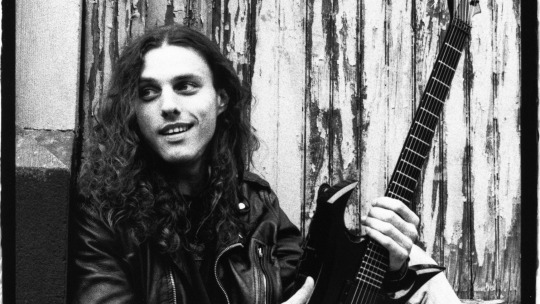
#Death#Chuck Schuldiner#metal#heavy metal#death metal#Scream Bloody Gore#Leprosy#Spiritual Healing#Human#Individual Thought Patterns#Symbolic#The Sound of Perseverance#Death band
35 notes
·
View notes
Photo

The Platform, personal film review Skip or Stream? Stream!! 8.5/10 This film’s premiere on Netflix perfectly coincides with the time it’s more relevant— these months going on with the pandemic. Prescript— It’s not some film you can watch with snacks on. At least I lost my appetite. The Platform is a sci-fi/thriller concept/metaphor film (like parasite but as open as Darren Aronofsky’s Mother! when it comes to story telling, it goes beyond imagination to get the message across). Only this time, it’s satirized. It’s about the separation of classes, the rampant inequality of our modern life. Through its metaphors, the film introduces the floors as people’s classes. A tray of food is provided for all but it comes from the top, all the way down where of course, the masses at the late bottom of the building has no more food left because people on the upper floors consumed every bit of it. What they’re only left with is each other and hunger, which ultimately leads to violence. What’s interesting here is how the film tells us that there is more than enough food (say money, land, rights) to go around down to the lower floors, but overconsumption easily rules people when they know everything has a deadline (monthly switching of random floors). The pace was not as speedy as Uncut Gems but it took all the time it needed to get the feelings right in your skin. I just panted a bit on the change of mood it brought me though— humor, disgust, terror, relief (sometimes?), and back to terror, and most especially, hopelessness. The finale was left open. Even when it was conclusive that they somehow succeeded— it didn’t really show what actually happened. I think ultimately because in reality, we aren’t there yet. They didn’t show how because there was nothing to show. But what I got about the child being the message was because, people (even the admins) didn’t believe there could possibly be a 16 y.o. below anywhere in the platform - esp someone that was alive and well-fed in the bottom most floor. That it was even possible for that kid to be alive (and innocent and uncorrupt) amidst all the chaos and everybody believing they need violence to survive. And what they did with the child wasn’t shown in the ending, because that’s what we’re supposed to really solve. The film embodies the current class differences and if there was a solution to this, we would’ve figured it out already. But there’s not (hence not shown). And up to date, we’re still jammed (with the pandemic coming into picture, the hoarding, the VIP testings— this is apropos now more than ever). The ending was put there not for us to understand or interpret, but so WE could actually think of a solution, so we could search for that little girl in this cruel society, and only then we would be able to satisfy the closing of the film. It wasn’t a closing with meaning, it was blank “how” we needed to answer ourselves.
Deep diving to the story— you can skip this if you’re not in for SPOILERS. The protagonist, Goreng volunteered to be imprisoned inside a vertical tower with 333 floors (it’s not easy to imagine since it’s architecturally impossible in the real world), where the only source of food is coming from a platform— some sort of block of cement coming from floor 0 down to floor 333 (funny how x2 per pax is 666). The platform is packed with delicious cuisine (which were specifically favorites of the people who came/brought in as prisoners— yes, I said came in because there were actually volunteers that wanted in so they could get something in return, like a diploma). Once a day it lowers through the layers of the tower allowing the inmates of each floor (2 pax each level) to get their fill. You get the point— those at the top get to stuff their cheeks with as much food as they can, and those at the bottom left with shattered glasses and empty bowls and plates. But the interesting thing here is, every month, the inmates are drugged and taken to a new floor, randomly picked. First month you could be starving at the bottom, and the next month— who knows, you could be the ones stepping on freshly baked cakes— worst is if you belong to 100+ floors down, where there’s absolutely no food left. So with each floor having 2 inmates and nothing to eat, what do we make of that? It’s a complete transparency of the current situation (I’d say in our country but it’s all over the world ESP today)— those at the top has nothing to worry about, while the bottom tenants eat each other alive. And the fact that everything has a deadline forcing each individual to take as much as they can, while it’s there. Sounds familiar? (Toilet paper, masks, alcohol, ring any bells?) Eventually, Goreng, being an idealist, wanted to destroy the way the system works by giving everyone only the part of the food they need. It was revealed by one of his floormates that the food was actually enough for all floors even when it doesn’t seem like it. And that’s only because people at the top couldn’t stop their greed about consuming so much more than they need, leaving people below starving and violent. Baharat, his floormate is also an idealist and wanted to climb to top most floor by asking the tenants above them to grab his rope. It gets complicated when they even started asking him a lot of things including who his God is (religion conflicts) and said they’d help him and instead, shits on his face when he tries to climb. Realizing they don’t have a chance at the people above, Goreng and Baharat decided they could work together into Goreng’s original goal, feeding everyone fairly by getting into the platform (with very good intentions) as it descends each floor. They were also planning to go up with it to send a message, like a rebellion as it ascends every after it reaches all the floors. This starts off okay but ultimately becomes gore when they start to see floors where people have already engaged in murder and cannibalism for survival’s sake. This stains their innocence and leads them to kill other tenants off for survival as well. There’s this one character— mother, who was seemingly looking for her lost boy by going down the platform every once in a while, but dies in the latter part of the film. The child however, who turns out to be a girl btw, meets Goreng in the end, at the 333rd floor. It’s unclear how and why the child is down there esp when one of the tenants specifically said they weren’t letting 16 years old and under in the facility. It seems that the mother’s repeated descent on the platform wasn’t an attempt to find her child, but to ensure the food reached the bottom floor to feed and protect her child by keeping her there. When they realized she was the one they should send up as a clear message (not sure about this but I think is— she’s the message that there doesn’t have to be violence? Because she was pure? Unharmed, innocent, and even healthy, despite being at the last floor. And something that nobody believes is possible— both the fact that there’s a child in a facility and that her being there without violence to survive, that’s why she was the right message?) like in real life? She was the symbol that we don’t all have to be like this to each other to survive, I wasn’t sure if they were talking about hope but I think (and hope) so? And it was also then I realized, it’s on us to understand and figure out how to get her? How to get “the message” across and change the system? Hence, why it was open ended and what happened wasn’t shown at the end, because there was no really knowing what happened to something that isn’t happening yet— irl. It was the shoe’s way of shoeing its audience that hey, this is possible if only we all cooperate. There doesn’t have to be violence and dead bodies, if we learn to give we can beat the system. And not showing how the system took her in the end is a hint that we haven’t gotten there yet, and that’s for us to figure out. Also my take on the mother was pretty much how I see it in Mother! movie— she was really mother earth preserving hope. And with people’s greed and selfishness, she was eventually murdered brutally. And in our case, she is being treated that way now, sadly. We’re all almost like Goreng, who finds out how the system works and tries to fight it but is being hopelessly corrupted in the process. Those at the top never even consider giving up excesses and just know how to take and take as much, and the bottom masses are too busy surviving to even consider reason— no matter what that meant. If this isn’t the greatest interpretation of how the world works, I don’t know what is.
102 notes
·
View notes